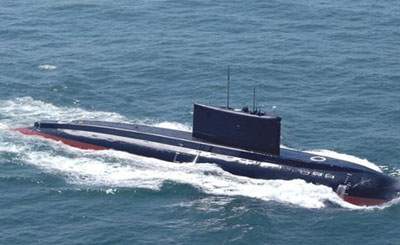This is Scientific American — 60-Second Science. I'm Christopher Intagliata.
In The Hunt for Red October, the Soviet submarine captain played by Sean Connery commands his crew to verify the location of a target. (MOVIE CLIP: "Give me a ping Vasily. One ping only please.")
That ping is known as "active sonar." Bob Headrick of the Office of Naval Research, the ONR, says it's the audio equivalent of switching on a flashlight. You're getting information back, but also broadcasting your location to other ships.
"And you know the number one priority in the submarine is to remain undetected." So subs can keep their secrecy by eavesdropping on other ships instead... listening for propellers and electronics and so on. Such methods, known as "passive sonar," generally require a skilled operator. But researchers are teaching machines to do it, too.
They first recorded the underwater rumblings of cargo ships off the California coast (ship sound) using an array of 28 underwater microphones. They fed that sound, along with the ships' actual GPS coordinates, to their machine learning algorithms. And then they gave the algorithms new recordings, and asked: where's the ship?

"And it did extremely well." Emma Ozanich, a PhD Student in underwater acoustics at the Scripps Institution of Oceanography. Using the audio data, she says the algorithms pinpointed the ships to within a couple hundred meters, at distances of up to 10 kilometers.
But it's not so clear what the machines now know. "One of the interesting parts about machine learning, especially neural networks, is that it's more difficult to pull out what it's actually learning specifically. It's a little bit of a black box." The research is in The Journal of the Acoustical Society of America.
Bob Headrick of ONR says the data set used here is relatively simple, compared to the real-world scenarios subs would have to solve. Still, he says, with lots more development: "You could conceive with enough effort you create the computer program that can beat the trained operator."
There is a precedent, after all, for machines defeating our best human operators. It was in that other great battle of the cold war: the game of chess.
Thanks for listening for Scientific American — 60-Second Science. I'm Christopher Intagliata.











